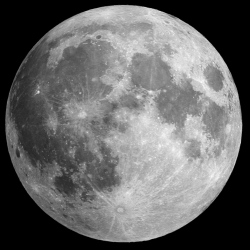
Humans have spent centuries documenting craters on the moon, but thanks to a new computer algorithm, artificial intelligence was able to nearly double our index of known moon craters in only a few hours. The technology inadvertently discovered nearly 7,000 new craters.
Traditionally, we’ve counted and observed moon craters with visual inspection, but this method has its limits. We can only document what we can see. The aim of the new crater-counting AI is to increase the accuracy of moon crater documentation. The project is led by Ari Silburt at Penn State University and Mohamad Ali-Dib at the University of Toronto.
According to New Scientist, the crater-counting machine was taught an algorithm designed to identify craters larger than 3 miles (5 kilometers) in diameter. This limit was set to help the AI distinguish between a crater and a planetary feature, such as a mountain edge.
However, the algorithm was so effective, it not only documented already known craters on the moon’s surface but also identified previously unknown ones. Although the technology falsely identified a few non-craters, in only a few hours the AI was able to nearly double the number of known craters on the moon measuring 3 miles or more by finding 6,883 more.
